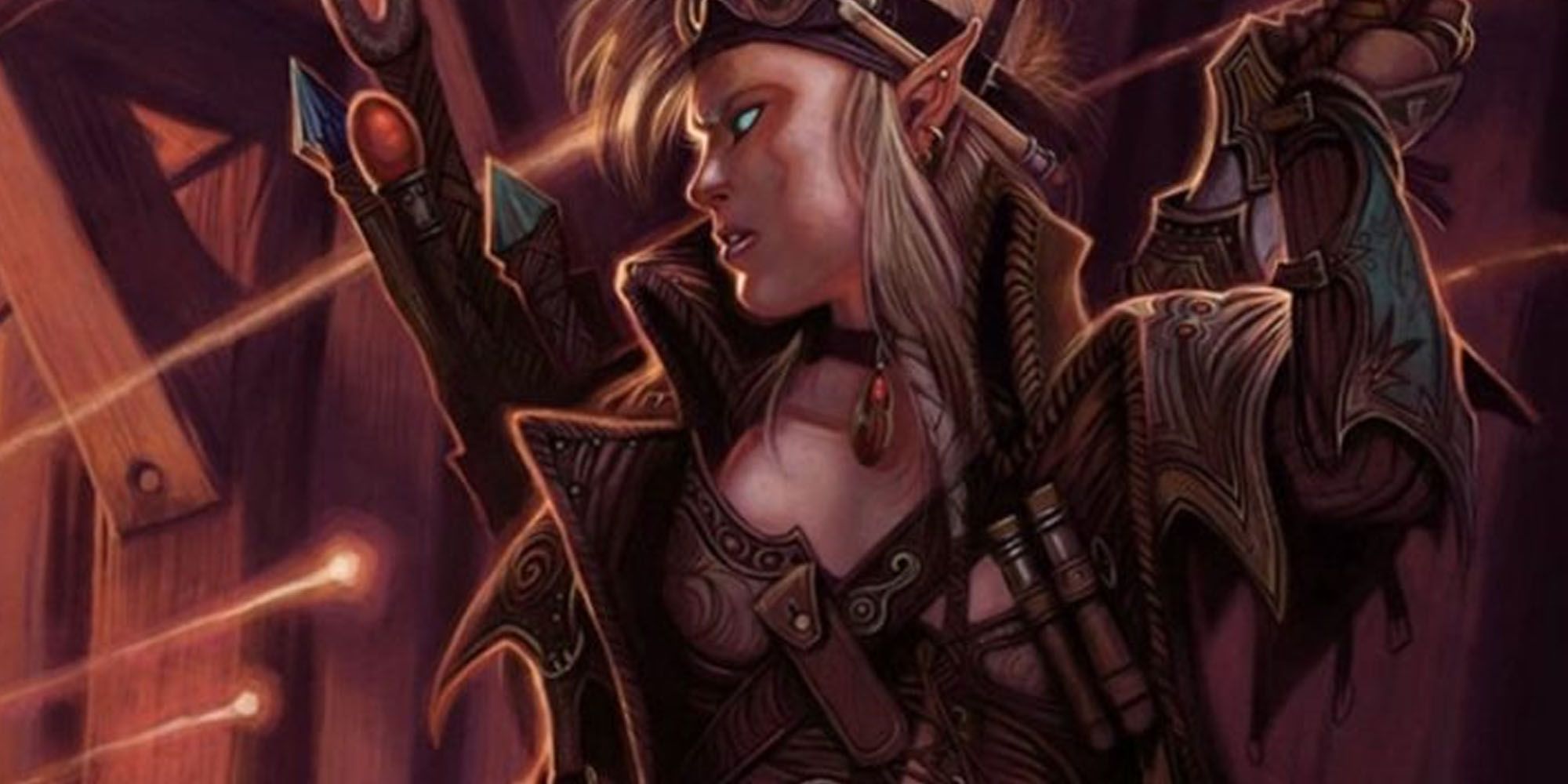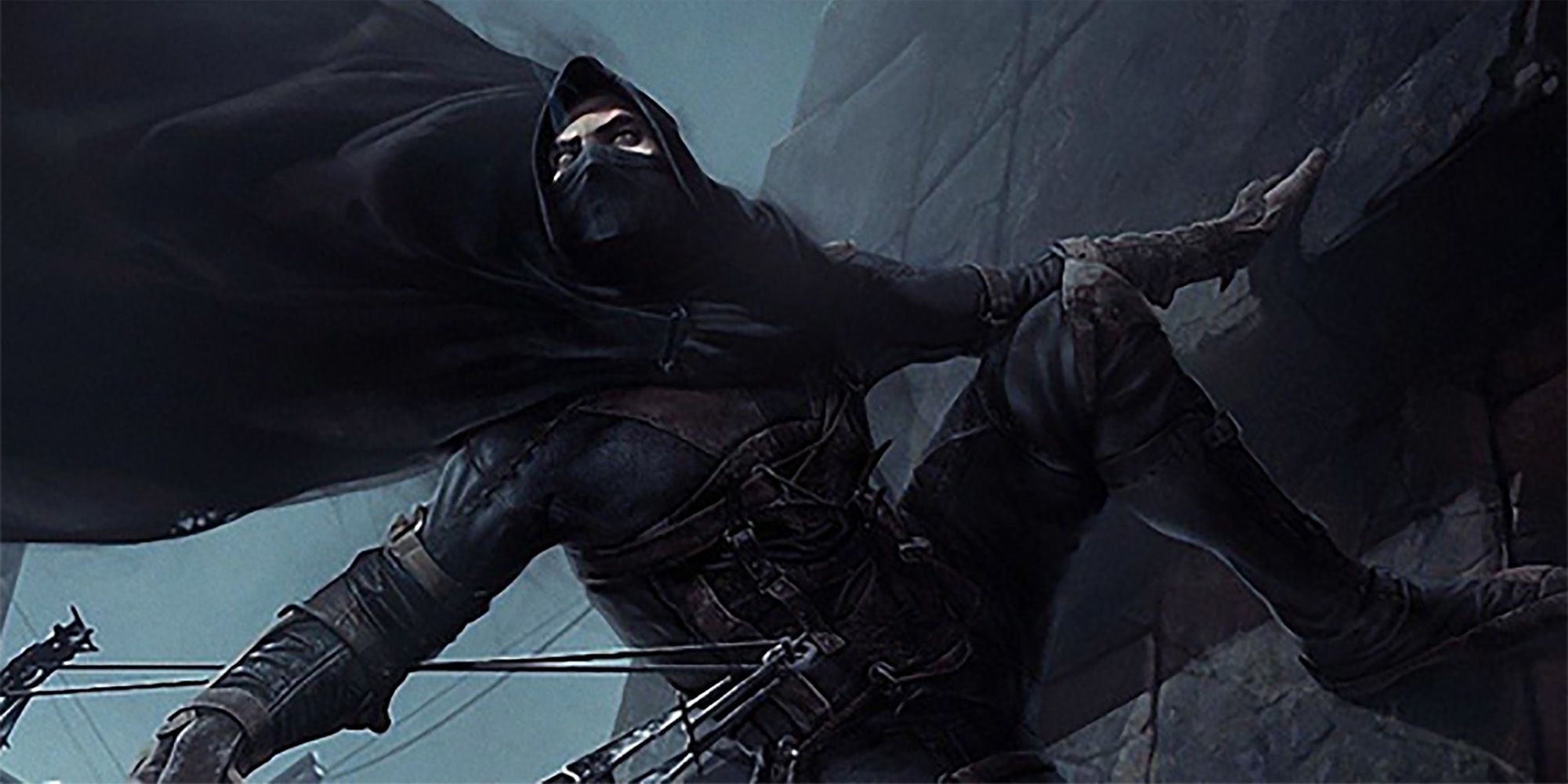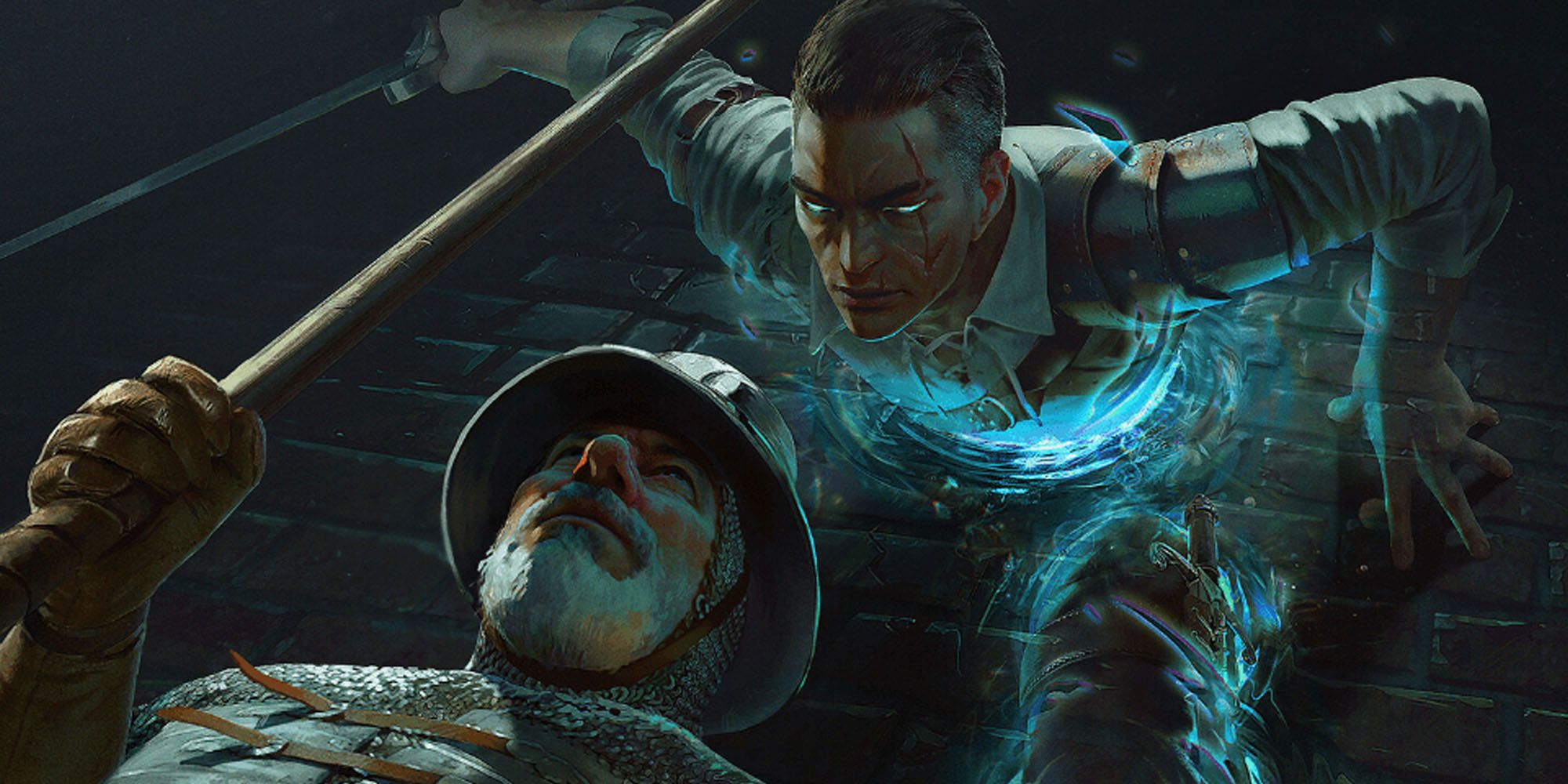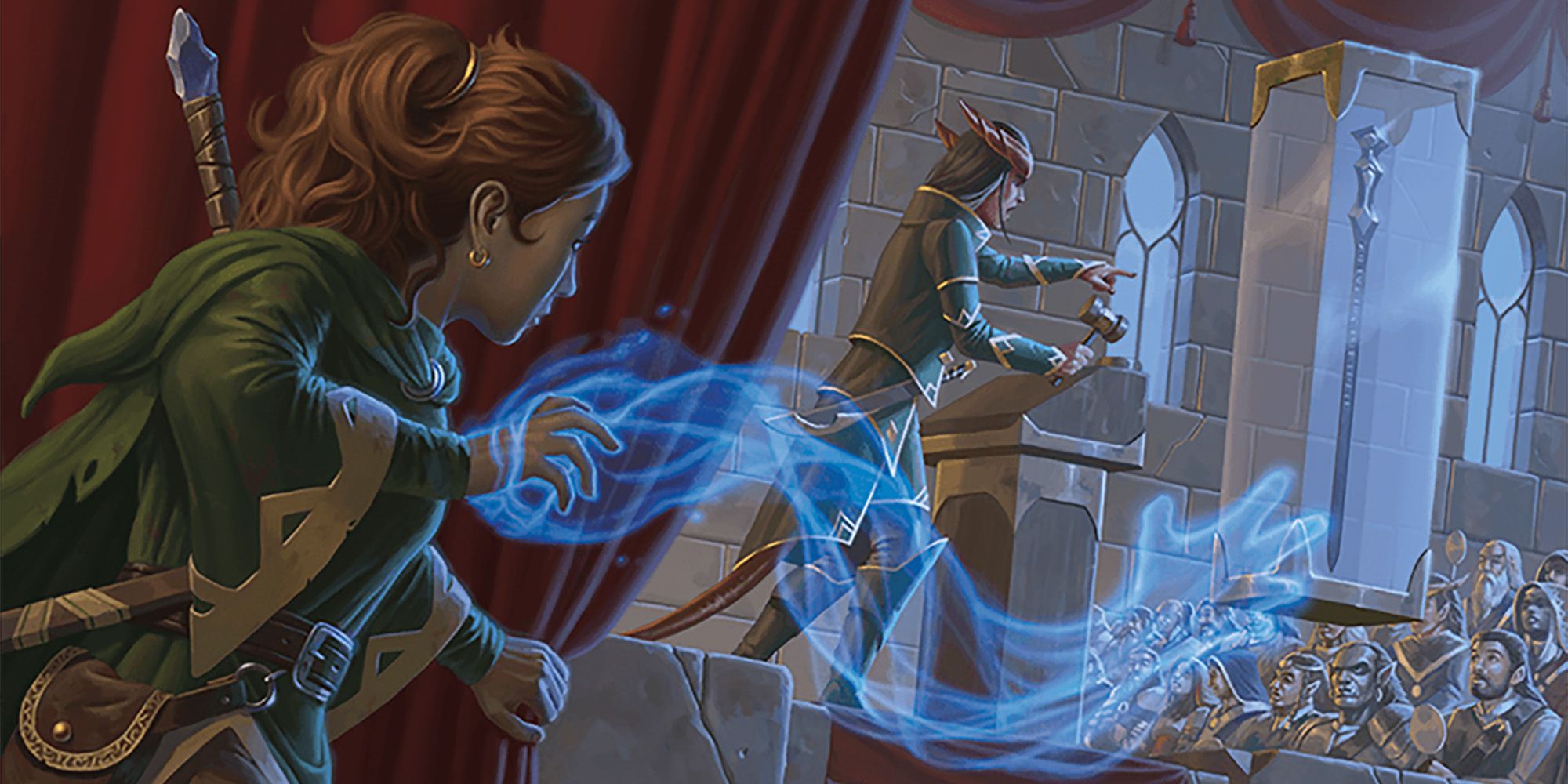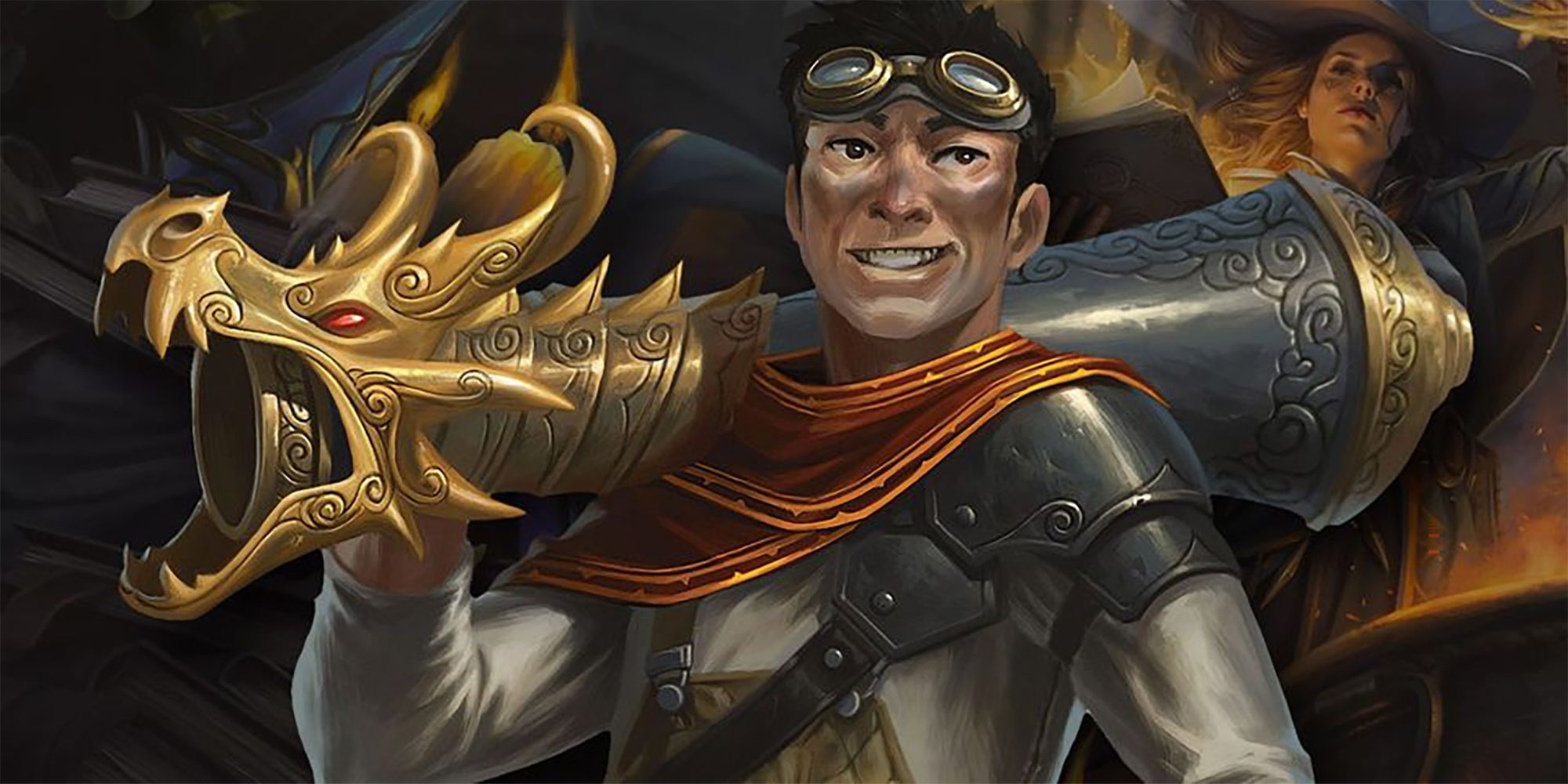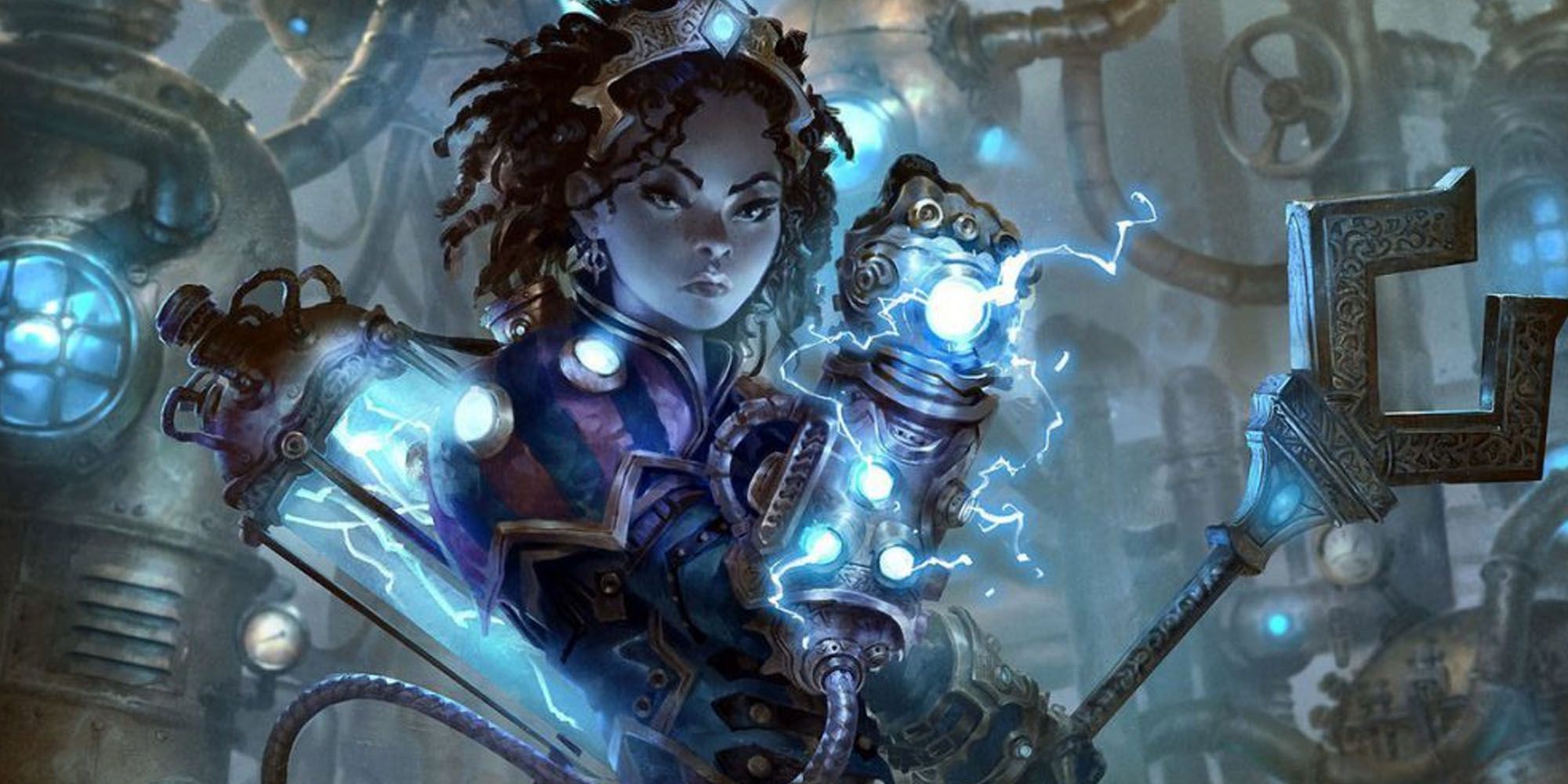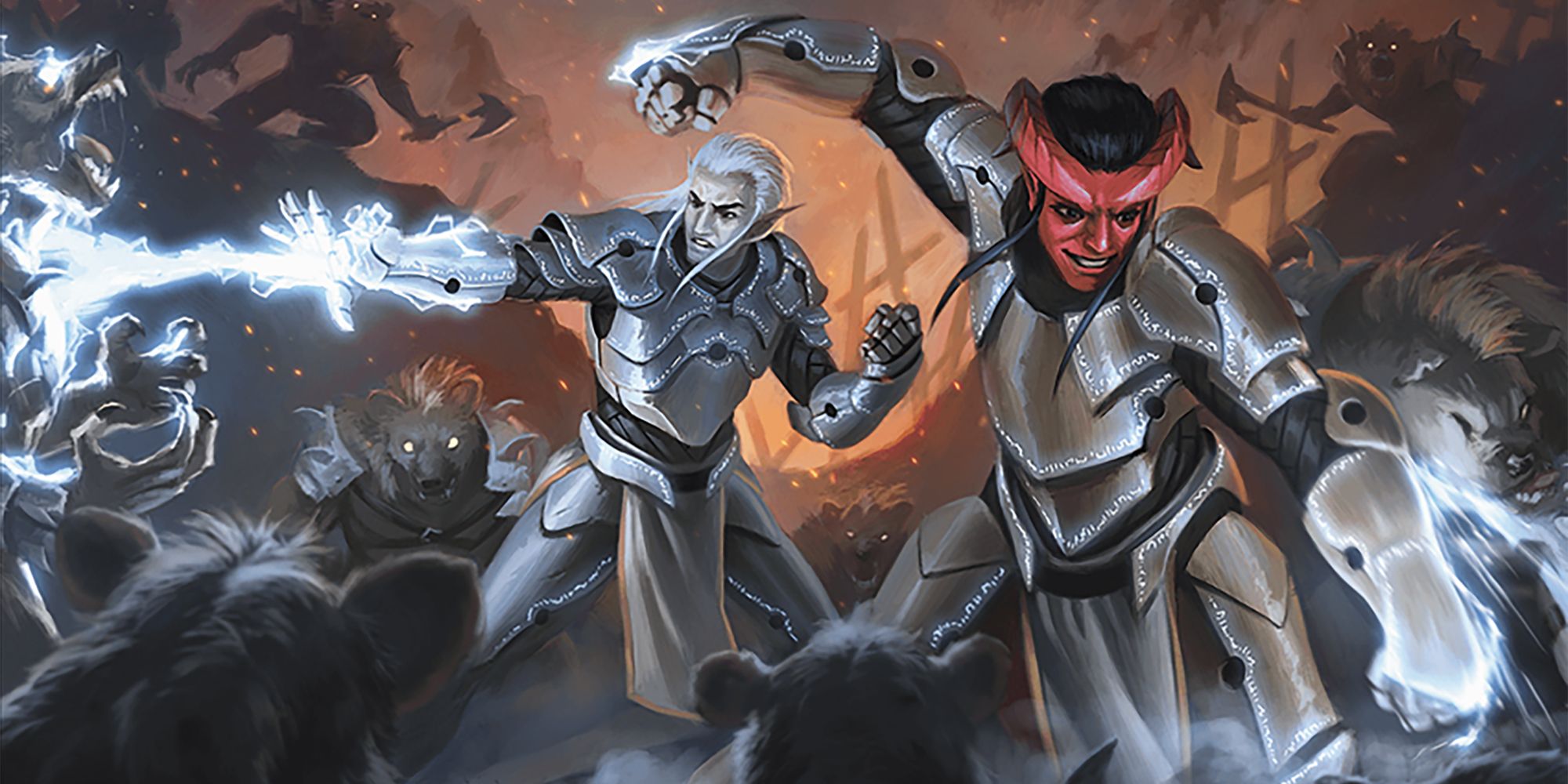Sometimes, a Dungeons & Dragons player doesn't feel entirely satisfied with a straight-level build into a single class. While there are powerful abilities at the highest levels of each class, there are also limitations that dipping into other classes can alleviate. This is why multiclassing is so appealing.
Though the Rogue and Artificer classes are incredibly different at first glance, they actually have a lot in more common than you'd think. Though it's not a prerequisite that Rogues take on Intelligence, those who choose the Arcane Trickster Archetype must rely on the Artificer's core stat to cast the spells at their command. Merging these two classes can create a powerful character who's smart enough to cause trouble and get away with it.
Dexterity and Intelligence Are Core Stats for a Rogue/Artificer
Regardless of subclass, Dexterity and Intelligence are the core stats for a Rogue/Artificer multiclass. Rogues rely on DEX for sneaking, finesse weapon attacks, lockpicking and acrobatics, and it contributes to the character's Armor Class and Initiative Bonus.
Meanwhile, the Artificer's core stat is INT, which is used when crafting and creating the ingenious tools of their trade. When choosing the Arcane Trickster Archetype, INT is also required for the Rogue's spellcasting abilities, which are drawn from the Wizard's spell list. INT contributes to useful skills like Arcana, History, Investigation, Nature and Religion. Depending on which class the player starts with, when it comes time to multiclass, a minimum score of 13 is required in the core stat of whichever class is being picked up.
Best Races for a Rogue/Artificer Build
Since this build need to maximize the character's Dexterity and Intelligence, the High Elf and Eladrin Elf variants are good options, as each gets +2 DEX and +1 INT. Deep Gnomes and Forest Gnomes are also a great choice because they start out with +2 INT and +1 DEX.
Mark of Making Human variant gains +2 INT and +1 to an additional stat. They also get Artisan's Intuition, which allows for a d4 roll on ability checks involving the use of artisan's tools, and the Spellsmith trait, which grants access to the Mending cantrip and the Magic Weapon spell, which can be cast once per day for one hour and doesn't require concentration. These humans also gain access to Spells of the Mark like Identify, Fabricate and Creation.
Best Subclasses for the Rogue/Artificer Multiclass
The Arcane Trickster Roguish Archetype combines really well with the Artificer class. Arcane Tricksters can learn up to 13 spells from the Wizard's spellcasting list, reaching fourth level spell slots at higher levels. Their Mage Hand creates an invisible version of the spectral hand that can be used to stow objects, pick up objects or pick locks and disarm traps from a safe distance.
Merging Arcane Trickster with the Artillerist Specialist subclass for Artificers creates a crafty distance fighter capable of crafting projectiles and explosives that can be hurled from afar to make a big impact. At third level, they gain access to a number of useful spells like Thunderwave, Fireball, Wall of Fire, Wall of Force and Cone of Cold. They also learn how to craft a magical Eldritch Cannon of either small or tiny size, with the tiny cannon becoming a handheld weapon that can be fired into the distance. At fifth level, Artillerists can also learn how to turn any wand, staff or rod into an arcane firearm.
Leveling the Rogue/Artificer Multiclass
Getting each of the subclasses to at least level nine will give the character plenty of power and intrigue. Begin with the Artificer at level one, then take three levels to choose the Artillerist subclass before picking up three levels in Rogue to get the Arcane Trickster Archetype. Once each subclass has been added, switch between classes for each subsequent level up. The last two levels can both go into one class or be split as well.
Best Feats for the Rogue/Artificer Build
There are a few feats that work well for this multiclass build. For example, War Caster is a great option because provides caster advantage on Constitution saving throws to maintain concentration on any spells they have going. It also allows them to cast spells without using somatic components and they can use spell attacks instead of melee to take opportunity attacks against enemies. Spell Sniper is another useful feat, as it doubles the range on ranged spell attacks, and those ranged attacks ignore half and three-quarters cover. The Spell Sniper can also learn one new cantrip that requires a spell attack roll.
Best Spells for the Rogue/Artificer Multiclass
There are a number of outstanding spells for this multiclass, with the two most useful options being Invisibility and Greater Invisibility. Invisibility comes in handy when the character is trying to get into place, perhaps gaining a greater advantage on their next move or to set up their Eldritch cannon, though it drops as soon as they cast a spell or make an attack. Greater Invisibility maintains even after an attack is made or a spell is cast that doesn't require concentration.
Misty Step is a great bonus action for casters that adds 15 feet to their movement speed as they whoosh into place without using their actual movement to do so. Additionally, the Mending cantrip can be used to start repairs on any Artificer creations that may have been damaged, making it a must-have for those who tinker and bring their devices into battle.

